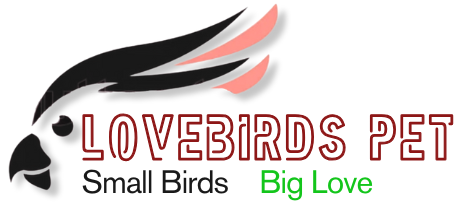Tahir Ilyas – Aviculturist and Lovebird Breeding Specialist Since 2008
Lovebirds, a type of small parrot celebrated for their bright plumage and their lifelong mating, need more than love — they need a lot of structure to be happy. If you own a Peach-faced Lovebird, Fischer’s Lovebird, or Masked Lovebird, a proper habitat contributes to their overall well-being. In this guide, you will learn how to create a perfect home for your lovebirds to help them stay healthy, bond, and have a perfectly natural life.
Choosing the Right Lovebird Cage
Minimum Lovebird Cage Size
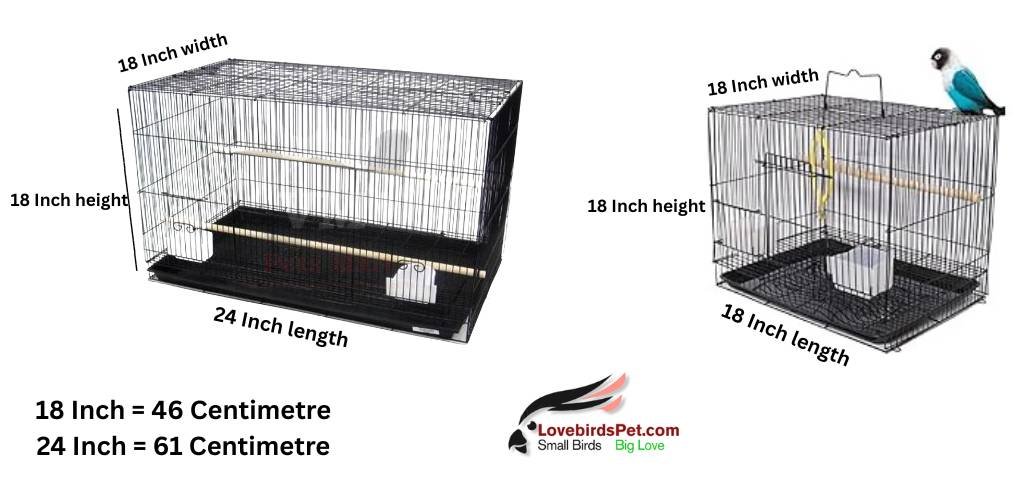
Whereas, a single lovebird will require no smaller than an 18″ L x 18″ W x 18″ H cage, and a pair will need no smaller than a 24″ L x 18″ W x 18″ H, with a bar spacing no larger than 5/8 inches to protect your pet from injury or flight.
Safe Cage Materials
Avoid using cages made with:
- Galvanised wire (zinc poisoning risk)
- Lead-based paint
- Untreated wood
- Choose non-toxic, easy-to-clean powder-coated metal cages.
Ideal Location and Temperature
Temperature: The habitat’s temperature should be maintained at 65°F to 80°F. Do not allow direct airflow from your ACs to hit your Lovebirds, and avoid placing your Lovebirds near your house heaters.
Location: Select a draft-free, well-lit, and social area of your home, but never in a kitchen (where smoke and fumes can be hazardous.
Height: Ensure that the cage is off the ground and positioned at chest level or higher so that lovebirds can feel secure.
Lighting for Health and Mood
Lovebirds require UVB light to synthesise vitamin D3 in their skin naturally, which they need to help them absorb the calcium they ingest.
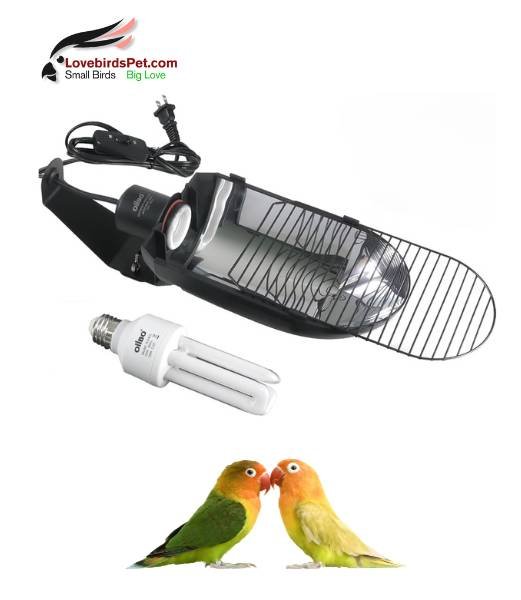
UVB Bird Light: Hang a full-spectrum bird light 12–18 inches above the cage, with their favourite perching place positioned under it, and leave the light on for 10–12 hours a day.
Replace UV bulbs every 6 months, as their output decreases over time.
Benefits of Natural Sunlight
The best thing for lovebirds is to let natural sunlight shine on their cage for a short time in the morning or evening. This gentle sunlight helps their bodies produce vitamin D, which is essential for bone strength, feather health, and immunity.
Morning or evening sunlight also helps kill harmful bacteria and germs inside the cage, keeping the environment cleaner and healthier for your birds.
Sunlight Safety Tips
Avoid exposing them to harsh midday sun, which can cause overheating.
Inside Your Cage: Perches, Toys & Enrichment
Perches
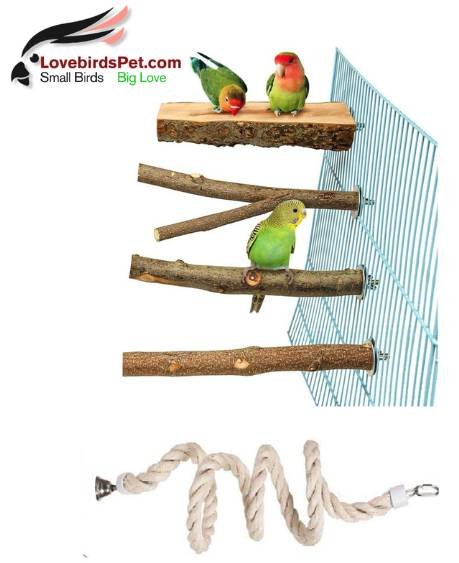
- Mix textures, diameters (awesome: ½ inch), and materials:
- Natural wood (manzanita, apple)
- Concrete (for nail maintenance)
- Braided cotton rope
Avoid:
- Sandpaper covers
- Gravel-coated perches
- Metal perches
Position perches so that they do not impede movement, and avoid installing them directly above food/water cups.
Toys
Lovebirds are intelligent animals and require daily stimulation.
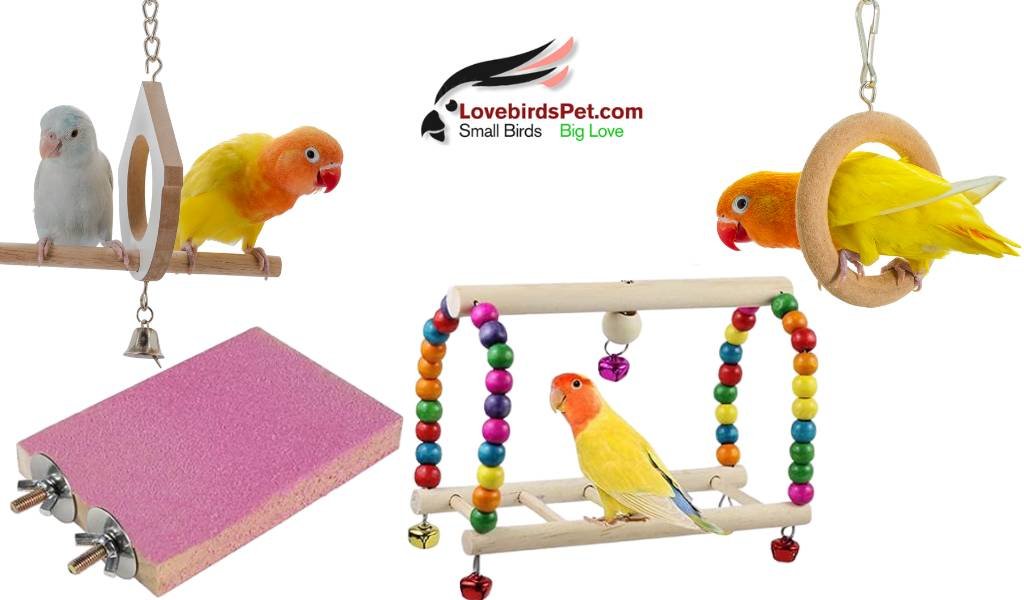
- Provide: Chewing or shredding toys (paper, cardboard, soft wood)
- Plastic toys that are safe to chew on (with no small parts)
- Swings and bells
Rotate toys weekly to keep them interesting and new, and to prevent unwanted behaviour caused by boredom, such as feather picking.
Cleaning and Maintenance
Daily Tasks:
- Discard any uneaten food to minimise spoilage and the attraction of pests
- Refill with fresh, clean water
- Clean off perches and food, and water dishes
Weekly Tasks:
- Fully replace all bedding or liners
- Spray the cage with a safe disinfectant (anti-mite and anti-bacterial) made for pets
- Rinse every part well to ensure no cleaning residue remains.
Bird-Safe Cleaning Guidelines:
Before spraying the cage, remove all food and water bowls. And only use cleaning sprays that are specifically made to be safe for birds.
Feeding and Water Guidelines
Use separate dishes for:
- Pellets
- Fresh food
- Water
If housing multiple birds, place several feeding stations around the cage to reduce competition and ensure all birds have access to food.
Offer large, shallow bowls for light bathing, especially during warm weather.
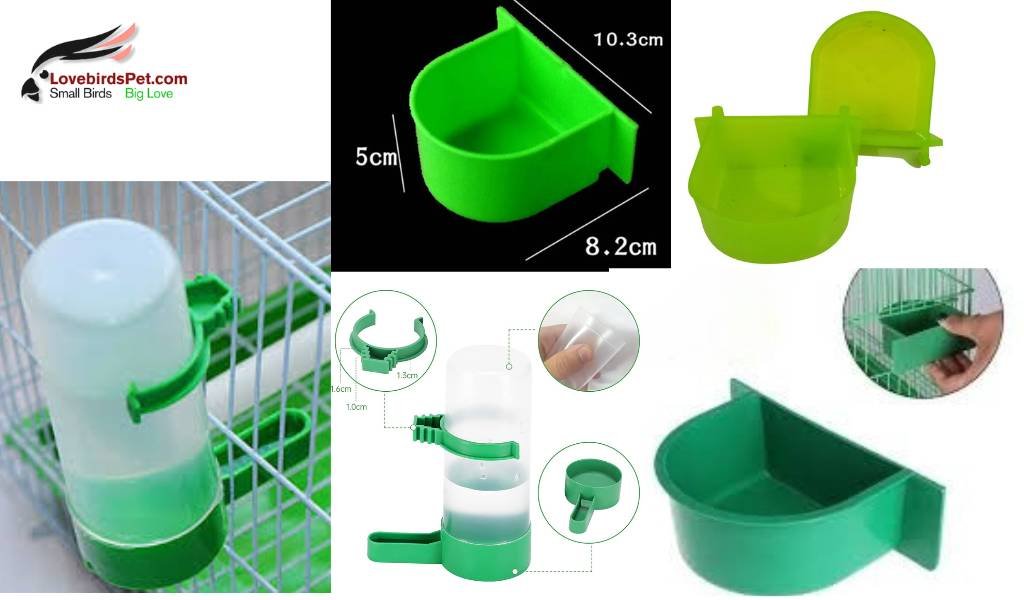
Wash all food and water bowls daily to prevent the buildup of bacteria and keep your birds healthy.
Choosing the Right Feeder and Water Bowls
Various bird feeders and water bowls are available in the market—hanging, cup-style, or trough types. Select one that fits your cage design and is accessible in your region.
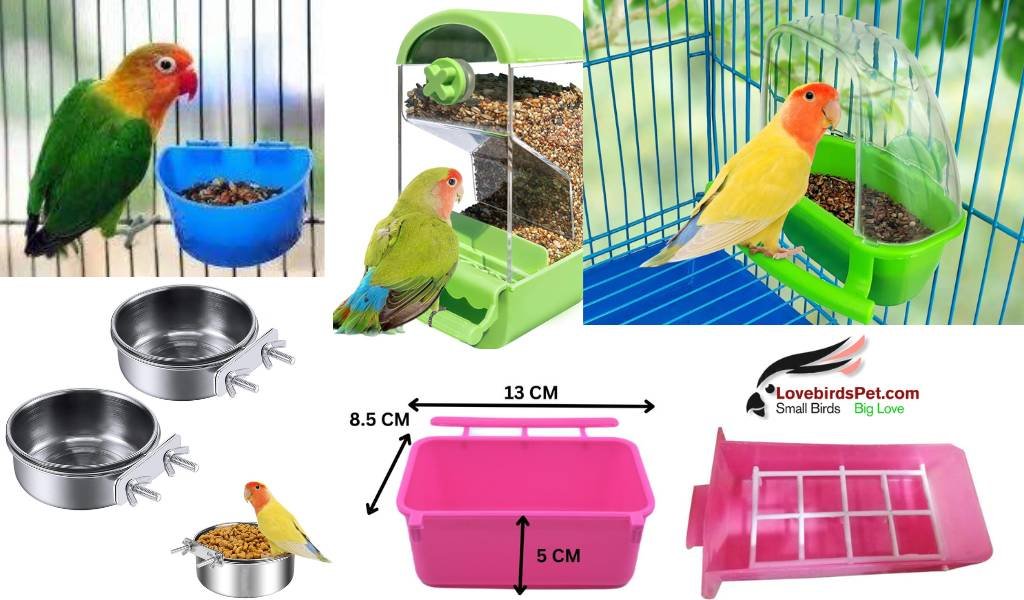
Balanced Diet for Lovebirds
A healthy lovebird diet includes:
Pelleted Feed (30-40% of Diet)
Select a small parrot or lovebird nutritionally complete pellet.
Fresh Vegetables & Fruits
Serve small bite-size pieces of the following, finely chopped:
- Berries
- Sweet soft Corn
- Papaya
- Melons
- Bell Peppers
- Pea Pods
- Broccoli
- Foods rich in vitamin A: sweet potatoes, red peppers, carrots
Ditch uneaten fruit and vegetables after 2-3hours to avoid spoilage.
Avoid These for Your Lovebirds
- Grit – Lovebirds do not require grit. It can do more harm than good.
- Human food- Never allow them to eat anything from your own plate. Some of the bacteria that come from our mouth can cause illness in birds.
- Poisonous foods –Do not let birds anywhere near avocado, chocolate, tea and coffee, alcohol, onion, or garlic. These can be deadly in those amounts.
Cuttlebones and Mineral Support
Attach a Cuttlebone holder to prevent the pieces from falling through to the bottom/away from the bird. This supports:
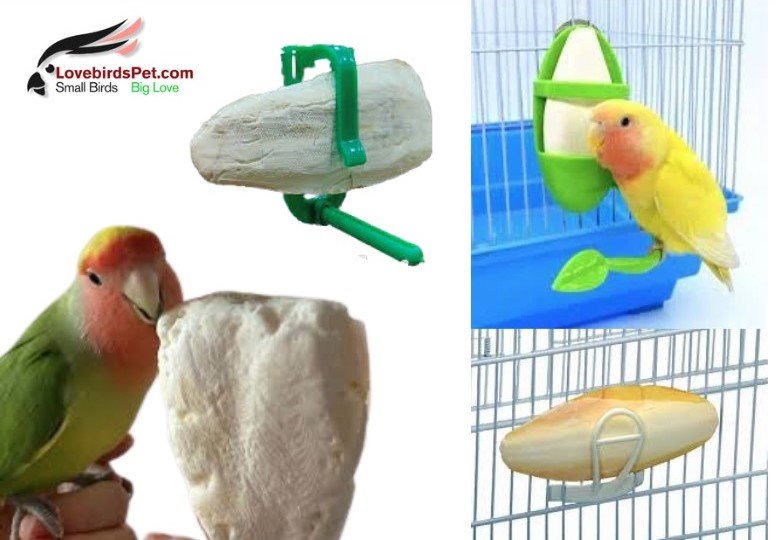
Benefits of Cuttlebone for Lovebirds
- Prevents calcium deficiency-related issues such as weak legs or poor coordination
- Supports strong bone development through natural calcium intake
- Aids in healthy eggshell formation during breeding
- Promotes smooth feather growth and condition
- Helps trim and shape the beak naturally, reducing overgrowth
- Encourages mental stimulation through gentle chewing activity
- Supplies essential trace minerals like magnesium, zinc, and iron
- Supports muscle function and overall strength
- Boosts immune system health
- Easy and natural calcium source for birds of all ages
Adding a New Bird to the Flock
If you’re adding a new lovebird, introduce it slowly to the others in a neutral area. Keep an eye on them to make sure there are no personality issues. Never co-mingle with other animal species, such as a lovebird, in a cage.
Last Checklist Of Lovebird Cage Necessities
- Properly sized powder-coated cage
- Pellets, millet, cuttlebone
- Multiple perches of safe materials
- Foraging and chewing toys
- Full-spectrum UVB light
- Food & water dishes
- Bird-safe bedding
- Bird bath or mister bottle
Conclusion
If you can provide an environment that suits all of your Lovebird’s physical and emotional requirements, he is yours and can be a happy, alert, and healthy bird. Whether you have a single lovebird or a mated pair, provide these bold, energetic animals with room to spread their wings, rays of sunshine to make them shine, toys to make them sing, and ready access to water and food. The more you mimic their native lifestyle, the happier and more loving your feathered companion will be.
If you found this article helpful, please share it with other bird lovers and leave a comment below to let us know what you think. Your feedback means a lot!
